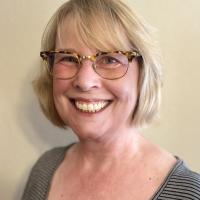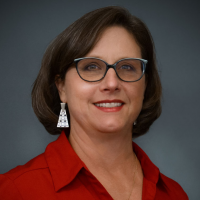
Success in Curriculum-Connected Professional Learning Experiences, even in a Pandemic
Feedback from professional learning isn’t always linked to positive student experiences. But our recent work with New York City teachers elicited wonderful reflections about their classrooms.
- “Students have been able to get excited about topics and become committed to learning as a result of the explore tasks at the beginning of each topic. Students see the real-world connections.”
- “A lot of students who struggle have more access and I’ve seen they are more willing to participate in the discussion."
- “Now, through Agile Mind, we're doing more projects, we're doing more hands-on. Seeing the kids grow in that way, I think that organization, that thinking, the critical thinking process, and problem-solving process that I see, I think that made me think that I need to do things differently.”
These reflections were shared by three different teachers who participated in a series of curriculum-connected professional learning sessions focused on the Agile Mind high school mathematics programs authored by the Dana Center.
While these quotes paint a rosy picture of success, the road we took to get there was anything but “business as usual.”
Hands-On, Minds-On Learning
In 2019, we learned of the Professional Learning Partnerships (PLP) initiative that would explore how curriculum-connected professional learning enhanced teachers’ use of high-quality curriculum in core academic subjects. The Dana Center, in collaboration with Agile Mind and the New York City Department of Education (DOE), saw this as an opportunity to use online professional learning sessions to amplify the messages and reach of more traditional face-to-face experiences.
Before the COVID-19 pandemic changed so much about the way we interact with one another, online learning for teachers most often took the form of webinars. While online webinars offered teachers flexibility in terms of timing, attendees usually participated passively, often in isolation, and rarely had opportunities for discussion with other participants. For many teachers, the webinar experience wasn’t much better than watching a slide presentation.
We wanted our sessions to provide a very different experience for participating teachers. We called on the expertise of the Dana Center’s professional learning facilitators who had designed and tested a model of online learning that offers the flexibility of a webinar as well as the interactive and engaging elements of an in-person session.
The resulting learning sessions leveraged video conferencing technology to engaged groups of participants in flexible, collaborative, and participatory learning experiences. In the words of one Dana Center facilitator, “This is active, hands-on, minds-on learning.”
For the PLP initiative, we saw the potential for using this approach to support teachers in implementing a high-quality curriculum. Rather than relying solely on face-to-face sessions at the beginning of the school year to familiarize teachers with the curriculum, we wanted to add short online collaborative sessions throughout the year to support teachers as they continued to learn about how to use the Agile Mind course programs for high school mathematics most effectively.
We planned some sessions to offer “quick start” support to teachers who may have been hired too late to take advantage of the initial face-to-face orientation. Other sessions focused on topics of special interest, such as differentiation, supporting language learners, or attending to students’ social, emotional, and academic development (SEAD). Sessions were organized into four learning “arcs.”
Offering the sessions throughout the year allowed us to provide ongoing touch points for teachers to share experiences, ask questions, and bring their current problems of practice to the group.
Starting Strong
The first arc focused on SEAD. Our goal was to help teachers understand the importance of SEAD for student success and to introduce simple tools and strategies to support students’ growth and persistence through accessing and tackling the rich tasks Agile Mind uses to introduce concepts, reinforce learning, and gauge student understanding.
Teachers who completed this series reported that the ideas and strategies shared were applicable and easy to implement. Because Agile Mind tools require students to collaborate on rigorous mathematical tasks, the SEAD strategies supported teachers in helping students access this work and in shaping student beliefs about their abilities to engage in this work.
At the end of this arc, almost three-fourths of the teachers were accessing Agile Mind regularly. We were pleased with this progress and couldn’t wait to get started on our next series of sessions, which would explore strategies for differentiation using Agile Mind. We were on a roll! Surely, no pandemic would come around to slow us down…
COVID Challenges
As we prepared for our first session on differentiation in the spring of 2020, New York City schools made the transition to remote instruction due to the COVID-19 pandemic.
Agile Mind is web-based, so it is well-suited for use in remote learning; also, because our professional learning sessions were already virtual, we didn’t need to make changes to our delivery design. But that didn’t mean we could continue these sessions without altering our plans.
The changing needs of teachers during this time was profound. We re-evaluated our content to find professional learning that would be useful in this new reality. We shifted the focus to strategies for using Agile Mind in both synchronous and asynchronous modes of virtual instruction.
During this series, the schedules for students and teachers changed as NYC DOE responded to the pandemic, resulting in some of the cohort being unable to attend professional learning sessions. Scheduling issues continued throughout the remainder of the project, but our challenges were nothing when compared with the severe challenges that students and teachers were facing!
A small core group of teachers were able to continue accessing our online collaborative learning sessions and our asynchronous discussion platform through the end of the project in fall 2021. These teachers continued to grow in their content and pedagogical knowledge using the Agile Mind course programs. And we learned so much about professionalism and persistence in the face of adversity as these teachers handled everything the pandemic threw at them.
Lessons Learned
Would we continue to use online collaborative learning sessions to provide curriculum-connected professional development, even outside of a pandemic? Absolutely!
Would we make any changes to the design of our synchronous and asynchronous activities? Possibly. Because of the impact of the pandemic, it’s hard to know exactly what should be changed, but we continue to push ourselves to make the online sessions more collaborative, engaging, and connected to the needs of the educators we serve.
Online professional learning is more common today than it was in the fall of 2019. The pandemic has taught us all that we don’t have to do things the way they’ve always been done; by moving nimbly and focusing on our end goals, we can still provide supportive and meaningful professional learning. We look forward to continuing with this work!
Download our Emerging Issues Brief to learn even more about the Professional Learning Partnerships initiative.
Download Now
About the Author
Kathi Cook
I was the first member of my family to complete any level of education after high school. When I graduated from college with my shiny new bachelor’s degree and Texas teachers’ certificate in hand, I had no idea where they would take me. I had been extremely fortunate to have had mathematics teachers who supported me through the years, and I wanted to help the students in my own classroom achieve their goals.
About the Author
Susan May
I believe that the curriculum students use should be relevant and meaningful, supporting their social and emotional learning, and opening doors to future aspirations. As a curriculum developer and director of curriculum at the Dana Center, I am privileged to support the thousands of students who use my work in the classroom.
Get in Touch
How can the Dana Center work with you to ensure that our nation's students are ready for postsecondary education and the contemporary workforce?


